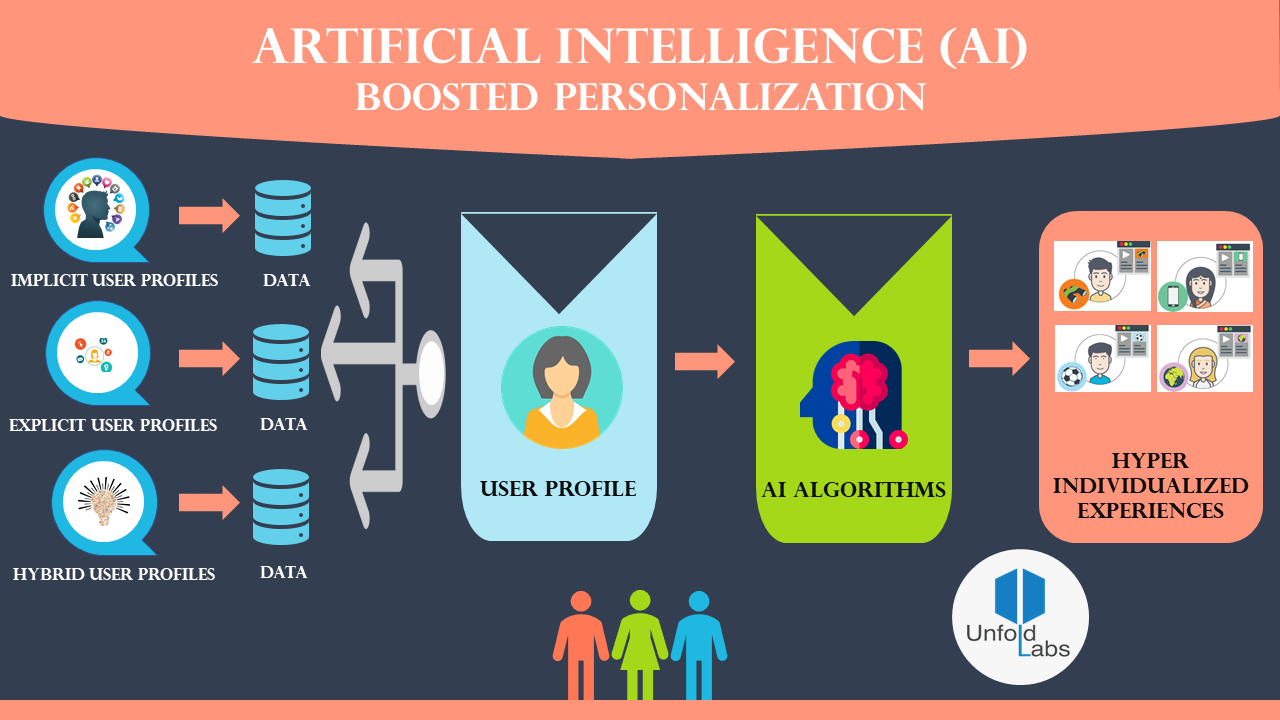The term artificial intelligence is often used interchangeably with complex terms such as machine learning, natural language processing (NLP), and deep learning, all of which are complicatedly intertwined.
However, one of the trending debates is the differences between natural language processing, and machine learning. This post will explain two critical sub-domains of artificial intelligence—machine learning vs. NLP—and why you should learn both.
Explaining Machine Learning
Machine learning is a data analysis technique that automates the creation of analytical models. It is based on the notion that systems can learn from data, recognize patterns, and make decisions without human intervention. It is a branch of AI that has become one of the most in-demand sectors in recent years.
For example, Netflix's recommendation system is powered by machine learning, an algorithm known for its power, and accuracy.
Netflix makes super-personalized recommendations for people based on what other similar users enjoyed by analyzing all their viewing data.
In today's highly competitive market, leveraging AI and effective personalization to analyze every available customer interaction and touchpoint to develop a more nuanced understanding of what motivates customer decisions, and behavior is critical.
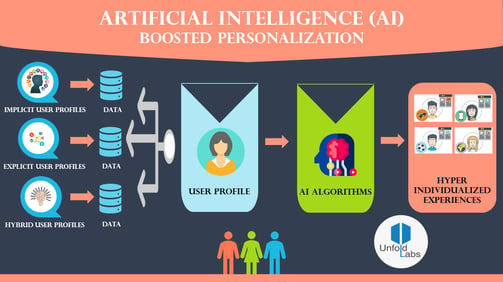
By leveraging data to analyze better and forecast consumer behavior, AI can also provide businesses and their affiliates with valuable insights into the potential content customers would like to read. The inclusion of links within this content, and knowledge of how to promote affiliate marketing links increases the buyer's likelihood of making a purchase.
Explaining NLP
Natural language processing (NLP) is AI that allows machines to understand and interpret human language rather than just read it. Machines can use NLP to understand written or spoken text and perform speech recognition, sentiment analysis, and automatic text summarization tasks.
An excellent example of this is Alexa. When you ask Alexa a question, she uses natural language processing to understand what you're saying. Then she uses it once more when formulating a response that humans can comprehend.
Let's imagine a fictitious ecommerce clothing company that allows customers to visit their virtual storefront online from the comfort of their own home, meet friends, and shop together.
NLP would take these interactions to a new level, generating audio responses, complete with linguistic nuances, and voice modulation. It could even translate the response automatically into multiple languages to reach a larger audience. These can be useful if you run a global business (or ecommerce brand).
However, NLP and virtual reality may not suit every ecommerce business, so if you're considering using them, it's worth familiarizing yourself with best practices for ecommerce conversions using virtual reality.

7 Differences Between Machine Learning and NLP
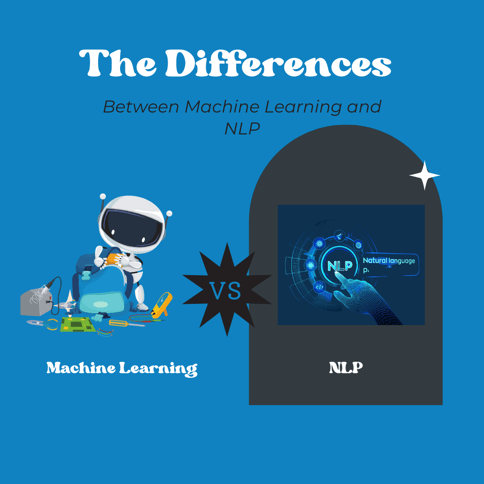
| Machine Learning |
NLP |
| Machine learning is a subset of AI that allows a machine to learn from past data without explicitly programming it. |
NLP is also a subset of AI, but it requires machine learning to be used effectively. |
| Machine learning aims to find patterns in data and then make predictions based on those patterns, which are often complex, to answer business questions, detect and analyze trends, and help solve problems. |
The goal of NLP is for computers to comprehend texts/languages in the same way that humans do. Once this is accomplished, computer systems will be able to comprehend, infer, summarize, translate, and generate accurate, natural human text, and language. |
| Machine learning's main applications include online recommender systems, Google search algorithms, Facebook auto friend tagging suggestions, etc. |
The main applications of NLP are speech recognition, sentiment analysis, translation, chatbots, market intelligence, automatic grammar checking, etc.
|
| Machine learning employs two techniques: Supervised learning: This involves training a model on known input and output data to predict future outputs. Unsupervised learning: This involves discovering hidden patterns or intrinsic structures in input data. |
NLP employs two techniques: Syntactic analysis: Involves analyzing a string of symbols in natural language, computer languages, or data structures that follow formal grammar rules. Semantic analysis: Checks whether the generated parse tree follows the programming language’s rules. |
| Machine learning is primarily concerned with accuracy and pattern recognition. |
NLP is concerned with computer-human language interactions, specifically how to program computers to process, and analyze large amounts of natural language data.
|
|
Machine learning requires a large amount of data to adequately capture the relationships that may exist between input features as well as between input features, and output features.
|
NLP requires machine learning to provide accurate responses, and automate some of these processes. |
| The machine learning algorithm must be monitored, and regularly maintained to keep it running. |
Because the system is designed for a single and specific task, it cannot adapt to new domains and problems due to limited functions, and it isn’t completely dependable.
|
Use Cases For NLP
Grammar Checker
Grammar checking is a popular application of NLP. Grammar checkers detect and correct grammatical mistakes in the input text.
Although we can still manually check for errors, a grammar checker would be accurate and fast at identifying significant grammatical errors and misspellings, as well as providing appropriate suggestions for correcting these errors.
This is especially useful if you run a blog or a social media account, as posts with grammar and language errors can turn off your readers. In professional accounts, it makes you appear less competent, whereas, in personal accounts, it’ll have a negative experience on your readers even if they choose to ignore the error.
In any case, if you're looking for ways to automate some of your blog content or social media posts, it's worth getting yourself familiarized with AI for social media as it can help you achieve incredible results.
Sentiment Analysis
Sentiment analysis involves identifying positive or negative feelings in a sentence, the sentiment of a customer review, judging mood via written text or voice analysis and other similar tasks.
Companies can gain insight into how customers feel about brands or products by analyzing social media posts, product reviews, or online surveys.
You could, for example, analyze survey results from a recently concluded webinar on Shopify alternatives to detect positive or sarcastic comments from audiences.
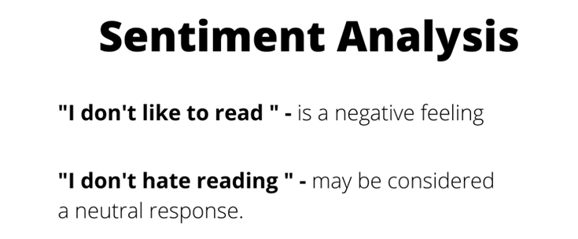
Named Entity Recognition
This is the process of recognizing information units such as names, organizations, locations, and numeric expressions such as date, time, money, and so on from unstructured text.

Understanding and analyzing customer demands and behavior is essential for ecommerce businesses. Using natural language processing, machines can understand what phrases, and words users use when searching for products. This allows users who use a search engine to customize their searches when using the system.
Customers shop online because they want their shopping experience to get better. The priority for improvement would be product discovery (including searches and category browsing) since it can always help customers find products. However, customers are generally hard to impress. Even when the search queries are not specific, most customers expect the search systems to recognize their intent.
Use Cases For Machine Learning
Real-Time Chatbots
Chatbots were one of the first forms of automation that allowed people to communicate with machines that can perform actions based on human requests or requirements.
However, AI-powered chatbots are now designed to handle more complex requests, making conversational experiences more intuitive.
For example, imagine a startup trying to sell affiliate tracking software to small businesses. Chatbots can assist in gathering customer data, and determining the next steps. These chatbots can also schedule meetings with the appropriate experts, and recommend solutions like real humans.
Fraud Detection
The ability of machine learning to understand patterns and detect anomalies that fall outside of those patterns makes it a valuable tool for detecting fraudulent activity.
It can be used to learn about a specific customer's typical behavior, such as when and where they use their credit card.
Machine learning can use that information and other data sets to determine which transactions are within the normal range accurately and legitimately. They can also determine which transactions are outside expected norms—and therefore likely fraudulent—in milliseconds.
Predicting Behavior
Machine learning models can be used by businesses to predict customer behavior based on historical data. Companies search social media for what people are talking about, and then identify those looking for a specific product or service.
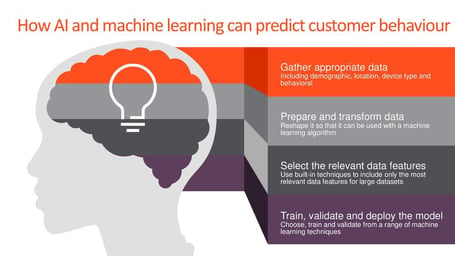
Let’s imagine a marketer who wants to write a blog post but isn't sure whether to write about creating viral SaaS product growth or theaverage affiliate commission rate.
AI can assist the marketer in generating hundreds of keywords with a few clicks. This allows the marketer to screen for ideas that the audience is most interested in, prioritize content, and visualize internal linking opportunities for SEO benefits.
Making Sense Out of Machine Learning and NLP (Which of Them Should I Learn?)
Initially, there is some overlap between machine learning and NLP, as machine learning is frequently used as a tool for NLP tasks.
So, we can say that NLP is a subset of machine learning that enables computers to understand, analyze, and generate human language. If you have a large amount of written data and want to gain some insights, you should learn, and use NLP.
However, machine learning is not required to learn NLP because there are other things you'll need, such as NER (named entity recognizer), POS Tagged (a parts of speech tagger can identify nouns, verbs, and other parts of speech tags in text). However, to use NLP effectively, you’ll need machine learning.
So, machine learning is definitely worth learning, and more online businesses are incorporating it into their operations, with the more established ones leading the way.
For example, machine learning assists software developers in predicting whether a software release will contain a large or small number of bugs. This can significantly assist release managers in better planning their software release cycle based on the resources available.
Above all, keep in mind that these new technologies are a part of our lives, and here to stay.
And, if you're a marketer looking to learn AI from the ground up but don't know where to begin, this Ultimate Beginner's Guide to AI in Marketing can significantly accelerate your AI education. Get a head start on the competition now, and have fun while learning!
Sam O'Brien
Sam O’Brien is the Chief Marketing Officer for Affise—a Global SaaS Partner and Affiliate Marketing Solution. He is a growth marketing expert with a product management and design background. Sam has a passion for innovation, growth, and marketing technology.


